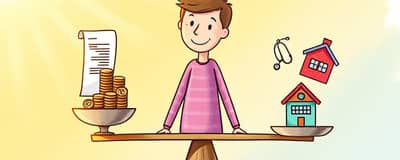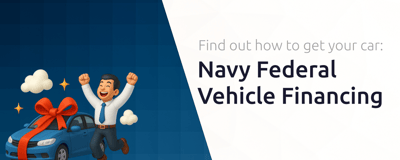Secured loans can be a powerful tool when managed wisely. By pledging an asset as collateral, borrowers may access larger sums at favorable rates—but this opportunity comes with responsibility and risk. In this article, we will explore how secured loans work, their advantages and pitfalls, and offer practical guidance to help you make informed choices.
Understanding Secured Loans
A secured loan is a loan backed by collateral, meaning you pledge property—like a home, vehicle, or savings account—to secure the debt. If you fail to repay, the lender has the right to seize and sell your asset to recover losses.
In contrast, unsecured loans carry higher interest rates and stricter credit requirements because they lack collateral. Secured borrowing appeals to those who need substantial financing or who have less-than-perfect credit histories.
How Secured Loans Work
When you apply, the lender evaluates both your creditworthiness and the value of the proposed collateral. Approved loans are structured so that the collateral’s value aligns with the loan amount and term. If repayment falters, the lender initiates repossession or foreclosure.
- Collateral appraisal, inspection, and valuation
- Loan approval with specified interest rate and term
- Regular payments until balance is cleared
- Repossession process if default occurs
Types of Secured Loans
Secured lending spans a variety of products tailored to different needs:
• Mortgage loans, secured by real estate, for home purchases or refinancing.
• Auto loans, where vehicles serve as collateral.
• Home equity loans or lines of credit, tapping into existing property equity.
• Secured personal loans, using savings accounts, certificates of deposit, or other assets.
• Business loans backed by equipment, inventory, or commercial real estate.
Weighing the Benefits
Secured loans offer several compelling advantages. They can gain access to lower interest rates compared to unsecured alternatives. Lenders are willing to extend unlock significant borrowing power responsibly, often in amounts that unsecured loans can’t match.
- gain access to lower interest rates—reduced borrowing costs over time
- build or repair credit over time with consistent payments
- higher borrowing limits than unsecured—ideal for expensive purchases
- longer repayment periods for flexibility in budgeting
- flexible use of funds for various needs depending on loan type
Recognizing the Risks
Collateral reduces lender risk but shifts it to you. Carefully consider whether you can maintain payments, because protect your most valuable assets is crucial when pledging property.
- risk of losing collateral through repossession or foreclosure
- damage to credit score upon default affecting future borrowing
- potential to owe after asset sale if collateral fetches less
- additional fees and extended approval due to appraisals and inspections
- asset depreciation risk if collateral value drops below loan
Crunching the Numbers: Rates, Terms, Amounts
Interest rates and terms vary widely based on loan type, asset quality, and credit profile. As of 2025, typical ranges include:
These figures offer a starting point. Your personal rate will depend on collateral quality, market conditions, and lender policies.
Is a Secured Loan Right for You?
Secured loans make sense when you need large sums that unsecured products can’t deliver or if your credit profile requires collateral to qualify. However, if you doubt your repayment ability, the stakes may outweigh the benefits.
Ask yourself:
• Can I meet monthly payments without strain?
• Am I comfortable risking this particular asset?
• Is the total borrowing cost justified by my goals?
Application Process Simplified
Applying for a secured loan involves these core steps:
1. Compare lenders for rates, fees, and customer satisfaction.
2. Gather documentation: proof of income, asset titles, appraisal reports.
3. Submit application and collateral details.
4. Undergo appraisal, inspection, and credit review.
5. Receive approval, sign loan agreement, and secure funds.
Expect a longer timeline than for unsecured loans—often several weeks instead of days.
Alternative Financing Options
If secured loans aren’t a perfect fit, consider:
• Unsecured personal loans—quicker approval but higher rates.
• Credit cards—for short-term needs; watch high APRs.
• Lines of credit—revolving credit with variable rates; may require collateral.
Practical Tips for Borrowers
1. evaluate the total cost of borrowing by adding all fees, insurance, and interest.
2. Shop around—compare multiple lenders to find make informed, empowered financial decisions.
3. Maintain an emergency fund to cover several payments if unexpected events occur.
4. Keep detailed records of payment schedules and communicate early with your lender if challenges arise.
Conclusion: Empowered Borrowing
Secured loans can open doors to homeownership, vehicle ownership, business growth, and more. Yet, they demand prudent planning, clear budgeting, and respect for your collateral. Weigh the low rates and high limits against the risk of asset loss.
By understanding the mechanics, analyzing costs, and preparing thoroughly, you can harness secured loans to achieve your dreams while safeguarding your financial future.
References
- https://www.equifax.com/personal/education/personal-finance/articles/-/learn/what-is-a-secured-loan/
- https://www.investopedia.com/secured-loans-5076025
- https://www.bankrate.com/loans/personal-loans/what-is-a-secured-loan/
- https://abcfinance.co.uk/secured-loans/advantages-and-disadvantages-of-secured-loans/
- https://www.experian.com/blogs/ask-experian/what-is-a-secured-loan/
- https://www.oceanfinance.co.uk/loans/secured-loans/advantages-disadvantages-secured-loans/
- https://www.wolterskluwer.com/en/expert-insights/what-banks-look-for-when-reviewing-a-loan-application
- https://www.uschamber.com/co/run/business-financing/what-is-a-secured-business-loans














